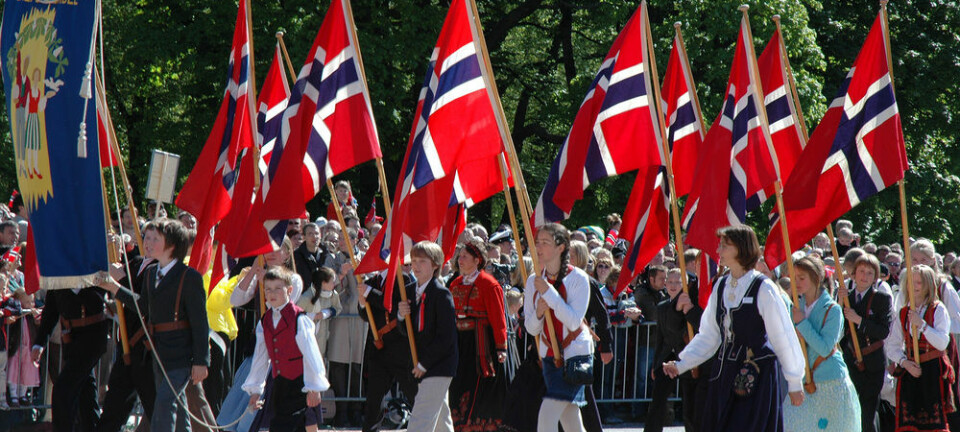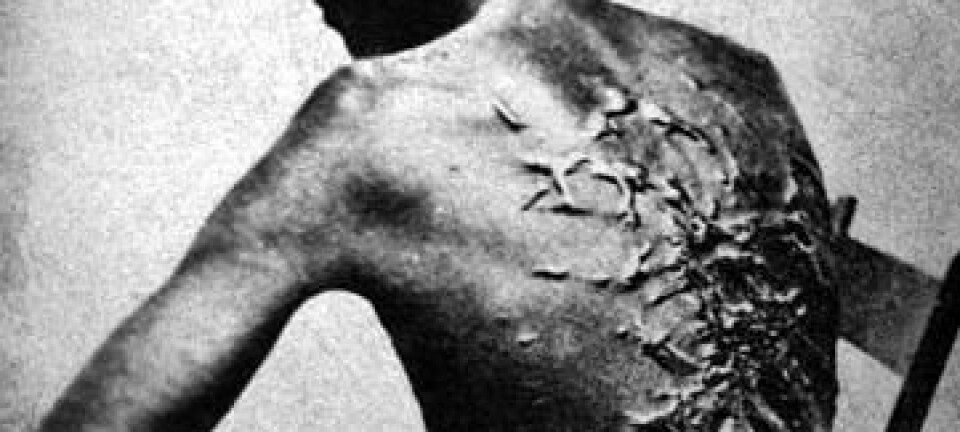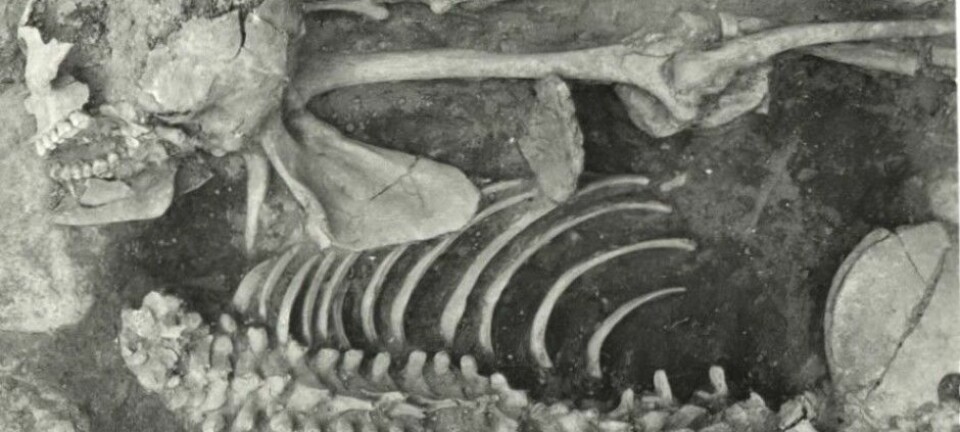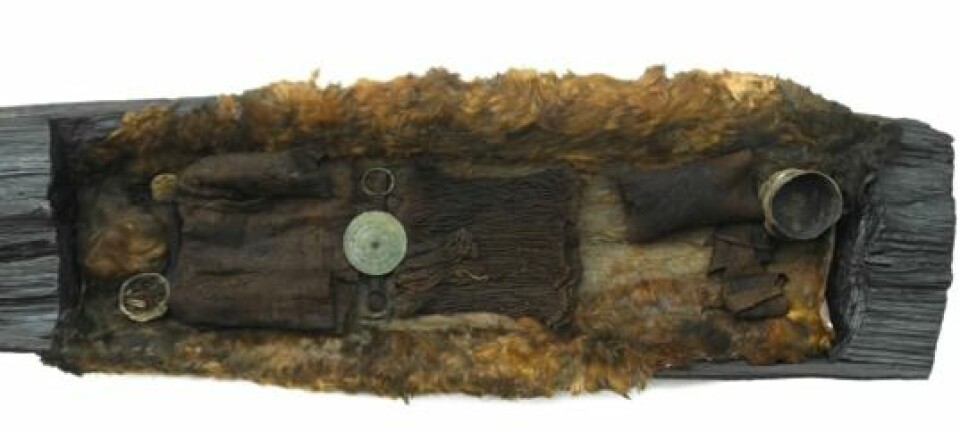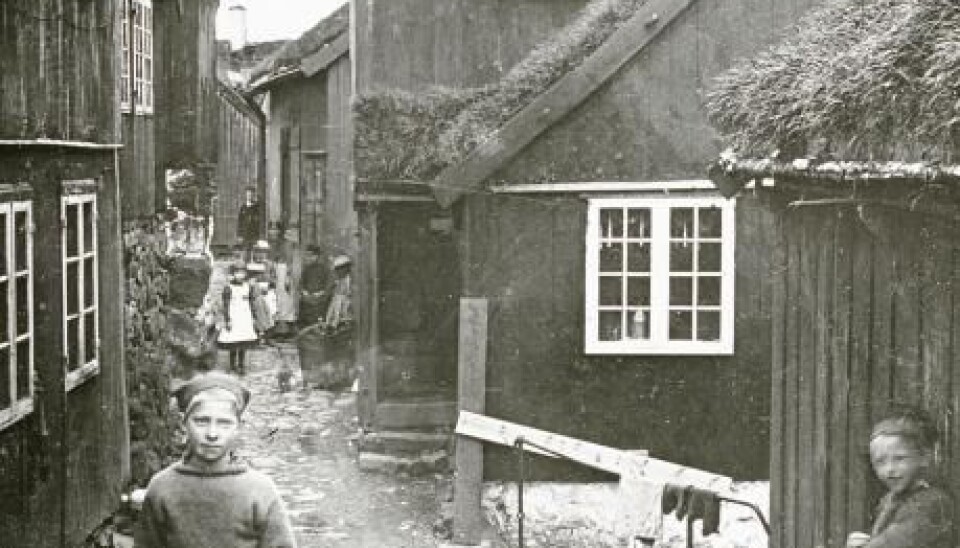
How big has Denmark been in the past?
From a world power to a small-state nation. Follow the history of Denmark’s conquests, trading outposts, and territories from the Vikings to the twentieth century, in our two interactive maps.
Today, Denmark is a small nation. But this was not always the case. In these two interactive maps you can follow the history of Denmark’s territories, colonies, and trading outposts, from the Vikings up to the present day.
The story takes us as far as the Caribbean, India, and China, where Denmark’s involvement in slavery and colonial power rears its head.
But most of the story revolves around Denmark’s struggles with their Nordic and European neighbours, through war, conquest, and family feuds among the European royalty.
When was Denmark at its largest?
The Kingdom of Denmark has grown and shrunk many times in the last 1,000 years. But according to historian Michaels Bregnsbo from the University of Southern Denmark, it is quite straight forward to estimate when Denmark was at its largest.
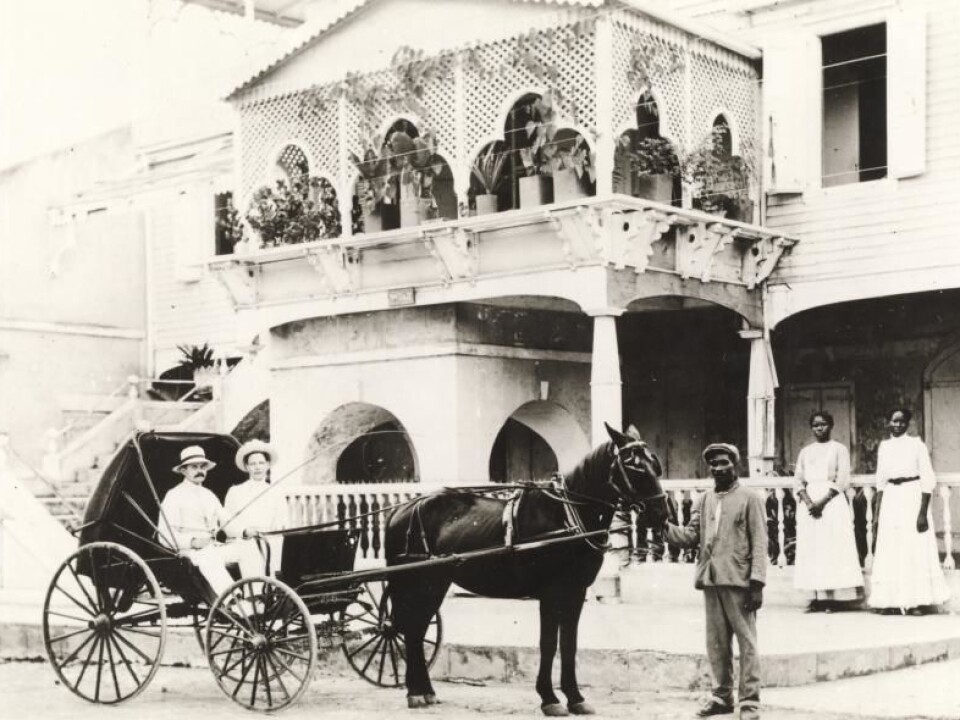
“It must have been during the Kalmar Union from 1397 to 1520 CE, although during some of this period the union existed more on paper than in reality. The union stretched from Denmark, Norway, Greenland, Iceland, Faroe Islands, Sweden and thereby also Finland,” says Bregnsbo.
“In the early Middle Ages, England was also under Danish rule, but the Kalmar Union covered a wider area,” he says.
Read More: The first Danish kings were pirates
Factories and trading posts around the world
But estimating exactly how much of the world has come under Danish rule over the years can be tricky.
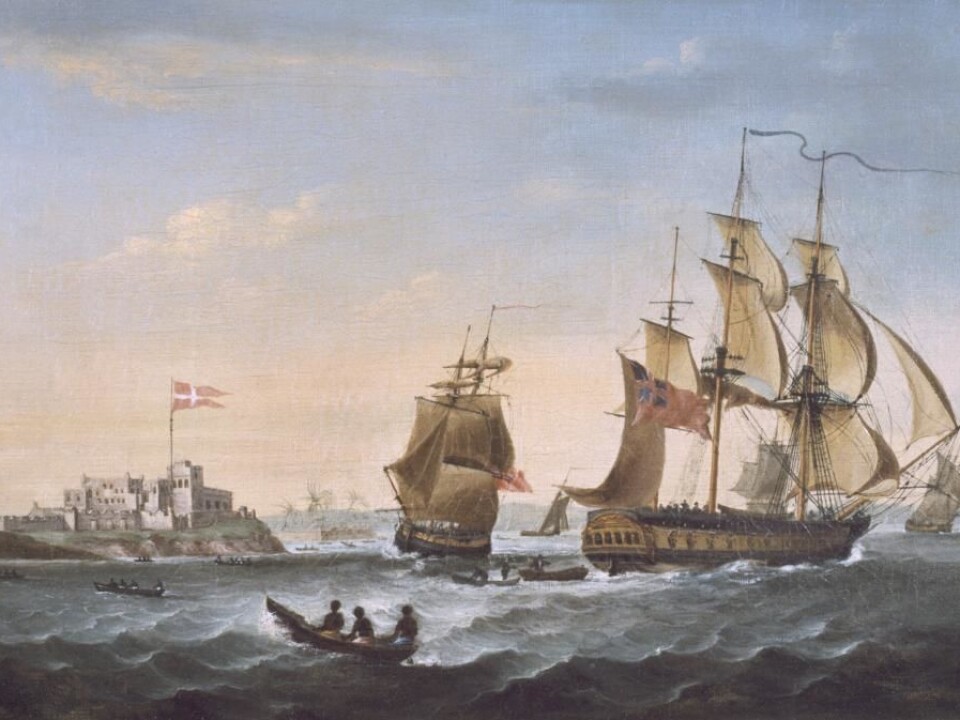
For example, this list does not include the Viking’s colonisation in North America, because these raids were presumably largely carried out by Norwegian Vikings.
Trading posts and factories across Asia between the 17th and 19th centuries are included, but these were established by the Asiatic Company. Individually, they were often small areas (sometimes consisting of just a few buildings) and few Danes actually settled there.
“It wasn’t necessarily Danes that lived there and not many Danes travelled there,” says Bregnsbo.
“In China, it was predominantly the Chinese that controlled the area. They allowed the Danes to come in and the trade went ahead via the Chinese trade consortium. The conditions were freer in India, although they too sometimes rented areas out,” he says.

You can see all of Denmark’s past and present conquests, territories, colonies and trading posts in the two interactive maps above.
Read More: 3,500-year-old gemstones cast light on a forgotten civilisation
The early days: Nordic union and tensions
In the 10th century, the Danish Viking king, Harold Bluetooth, conquered a large part of what is modern day Norway, taking advantage of the Norwegian nobility who were distracted by internal power struggles and infighting. At this time, Skåne and Blekinge in southern Sweden were already a part of the Danish Kingdom.
In 1042 CE, King Magnus the Good of Norway inherited the Danish throne, uniting the two kingdoms.
It was not until 1380, when Haakon VI of Norway and Sweden died, that his son, Oluf II, united the thrones of Denmark (through his mother Margaret I), and Norway and Sweden, by which time also included Finland.
Oluf II died seven years after gaining power, and his mother, Margaret I, became regent, uniting the kingdoms and maintaining the Kalmar Union. This existed intermittently until 1523 CE, and while the countries continued to exist as independent nations, power was consolidated under King Oluf II and then Margaret I as regent.
It ended when King Gustav I took the Swedish throne. However, Skåne, Halland og Blekinge, as well as the island of Gotland in the Baltic Sea remained Danish territory until 1658 CE, when Sweden was victorious over Denmark in the Dano-Swedish War.
Norway meanwhile, remained a part of the Danish Kingdom until 1814 and the Napoleonic Wars.
Read More: 1814: Denmark lost Norway but gained democracy
Greenland, Iceland, and the Faroe Islands
Meanwhile, Greenland, Iceland, and the Faroe Islands had all come under Danish rule in the 1380s when Oluf II took the Danish throne and inherited the Norwegian overseas dependencies.
However, the contact between Denmark and Greenland ceased between the 15th century and 1721 CE when the Norwegian priest and missionary Hans Egede arrived in Greenland to convert the local population to Christianity at the behest of the Danish king, Frederick IV.
Iceland was recognised as an independent country in 1918 but kept the Danish king as their head of state. This union came to an official end in 1944 with the Icelandic secession from Denmark. Greenland achieved home rule in 1979 and became a self governing autonomy within the Kingdom of Denmark in 2009. The Faroe Islands were granted a form of home rule status in 1948.
Read more about the history of Danish rule in the Nordic countries in the map above.
Read More: Denmark’s Cold War struggle for scientific control of Greenland
Germany and Denmark’s shifting border
From the 1100s up until the late 1800s, parts of what is today northern Germany also fell in and out of Danish control.
From 1169, Valdemar I of Denmark, also known as Valdemar the Great, took control of Rügen Island and Pomerania off the North east coast of Germany.
These areas fell in and out of Danish control numerous times, until Denmark finally relinquished control in 1814 following a deal with Prussia after the Napoleonic wars. Denmark gave Rügen and Pomerania to Prussia the year after, in exchange for the dukedom of Lauenborg. Meanwhile, Denmark gained control of Dithmarschen in Northwest Germany in the late 1100s which they held until 1227 CE. Denmark regainined control in 1559 CE before it was lost in 1864 CE.
The area of Schleswig-Holstein located between Hamburg and Kiel was under shared Danish control between 1490 and 1779 CE, after which the Danish king Christian VII succeeded in becoming the sole regent of the area. In 1864, following local political turmoil, Prussian and Austrian soldiers entered Schleswig. In 1920 the modern day border between Jutland in western Denmark and the Schleswig-Holstein province of Germany was decided following a public vote that split the province into its current northern and southern parts.
Other regions of Lower Saxony in Northwest Germany fell under the Danish crown in the 17th and 18th centuries. Denmark briefly took control of Bremen and Verden between 1621 to 1629 and 1712 to 1715, as numerous Danish Princes took up positions as ruling Bishops in the region. King Christian IVs younger brother and sons took up these positions, until the imperial war of the German Kaisers put an end to the practice in 1629. There was a brief reprise during the Great Northern War, between the Tsar of Russia and the Swedish Empire, until rights to the area were sold to Hanover in 1715 CE.
Denmark held onto other regions up until the 18th and early 19th centuries, including Oldenburg and the Duchy of Delmenhorst (lost in 1773 CE) in Lower Saxony, and the small German archipelago of Heligoland in the North Sea (lost in 1807 CE).
The Danish King Frederick III first seized control of Oldenburg and the Duchy of Delmenhorst in 1667 CE, when the reigning count died with no heir. After the Great Northern War, Frederick IV of Denmark sent the local nobility (the Duke of Holstein-Gottorp) on the run, and at the same time, took control of Heligoland. The Duke’s son married the Russian Tzar’s daughter, setting the two kingdoms on a collision course for control of the region.
Denmark retained control of the Oldenburg and Delmenhorst until 1773, when they struck a deal with Russia: Denmark would retain control of Schleswig-Holstein in return for Russian control of Oldenborg and Delmenhorst. Heligoland, would remain under Danish control until 1807, when the British took control during the Napoleonic wars. Germany was later given back control of the islands in 1890.
Read More: A 300-year-old murder could be solved
England and the Scottish Islands: conquest, war, and marriage
Danish Vikings first set foot in England in the 9th century and Ireland in the 10th century. Danish presence culminated in 1016 CE, when Cnut the Great conquered almost all of what is modern day England and protected the island from further Viking raids.
Cnut the Great died in 1035 CE and power passed to his two sons, Harold Harefoot who inherited England, and Harthacnut, who inherited the Danish Crown.
The Viking Age is considered to have ended in 1066 CE at the battle of Stamford Bridge, when the Norwegian King Harald Hardrada was defeated by the Anglo Saxon King, Harold Godwinson. Godwinson was slain just days later during the Battle of Hastings, when William the Duke of Normandy conquered England.
The Scottish islands of Orkney and the Shetlands also came under Danish control in 1380 CE, when Oluf II inherited the Danish crown, uniting Norway and Denmark. They came under Scottish control in 1459 CE, when the Scottish king, James III, married the Danish king’s daughter, Margaret, and received the islands as an economic guarantee for the dowry.
Read More: New study reignites debate over Viking settlements in England
Africa and The Caribbean: colonisation and slavery
The Danish presence on the Gold Coast of west Africa, in what is today Ghana, began in 1658 when a small Danish force captured the Swedish Carlsborg Fort. They quickly established forts and trading stations along the coast, including Fort Christiansborg, which today houses the offices of the President of Ghana. Denmark sold the Gold Coast colony to Britain for 10,000 pounds in 1844.
Denmark colonised the Caribbean island of Saint Thomas in 1672 with the establishment of the Western India and Guinea Company, and subsequently took possession of the neighbouring island of Saint John and the island of St. Croix.
Slaves from the colony in west Africa worked the plantations on the islands to send sugar back to Copenhagen, where it was refined and sold. In total, around 110,000 people were sold as slaves, captured on the Gold Coast of Africa and transported to the Danish colonies in the Caribbean.
The practice continued until Denmark finally made slavery illegal in the Atlantic Ocean in 1803. But it was not until 1848 that the islands themselves gave up slavery after facing increasing pressure from former slaves.
The Danish West Indies were sold to the USA in 1917 for 25 million USD, when they became known as the U.S. Virgin Islands.
Read More: Why Denmark cannot apologise for slave trade
India, Sri Lanka, and China: Trade and failed colonisation
Denmark’s attempts to establish tropical colonies in Sri Lanka (Trincomalee, in 1619 CE) and later the Nicobar Islands (in 1756 CE) were short lived, and ultimately unsuccessful.
But they did manage to establish successful trading posts throughout Bengal in west and southern India, and China.
In November 1620 CE, Denmark bought the small fishing town of Taramgambadi, later renamed Tranquebar, from the Prince of Tanjore. Here, they shipped cotton fabric to Copenhagen, along with pepper, cinnamon, and ivory.
The city became the sixth largest in the Danish Kingdom. By 1790 CE, it supported a population of around 4,000 people, mostly local Hindus and Muslims and up to 250 Danes. Tranquebar (and nearby Serampore) were the first Danish overseas territories to be sold in 1845 to Britain.
Other trading posts were established around the region, from Serampore (1755 CE) in West Bengal to Kozhikode (1752 CE) in the state of Kerela, southern India, and in Guangzhou in China (1732). Danish control of these areas came to an end by the middle of the 19th century.
The last Danish territory to be sold in the region, was the Nicobar Islands in the eastern Indian Ocean in 1868.
Read more about Denmark’s involvement in all of these locations and more in the interactive map above.
---------------
Read more in the Danish version of this article on Videnskab.dk
Translated by: Catherine Jex
External links
- Michaels Bregnsbo
- »Danmark - en kolonimagt«, Gads Forlag, 2017
- »Danmarks fjerne kolonier«, Heino Døygaard, Gyldendal, 2002
- »Bernadotte i Norden eller Norges adskillelse fra Danmark og forening med Sverig«, C. Th. Sørensen
- »Gyldendal og Politikens danmarkshistorie«, 1991/2005
- »Det danske imperium - storhed og fald«, Michael Bregnsbo og Kurt Villads Jensen, Aschehoug, 2004
- Danmarkshistorien.dk
- Byhistorie.dk
- Colonial Voyage
- »Den Store Danske«, Gyldendals leksikon på internettet
- Wikipedia
